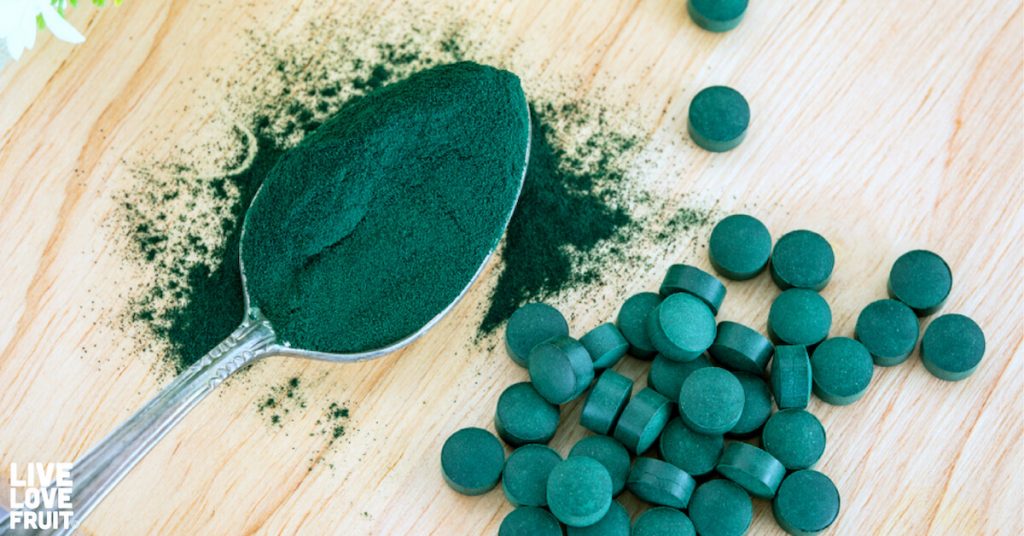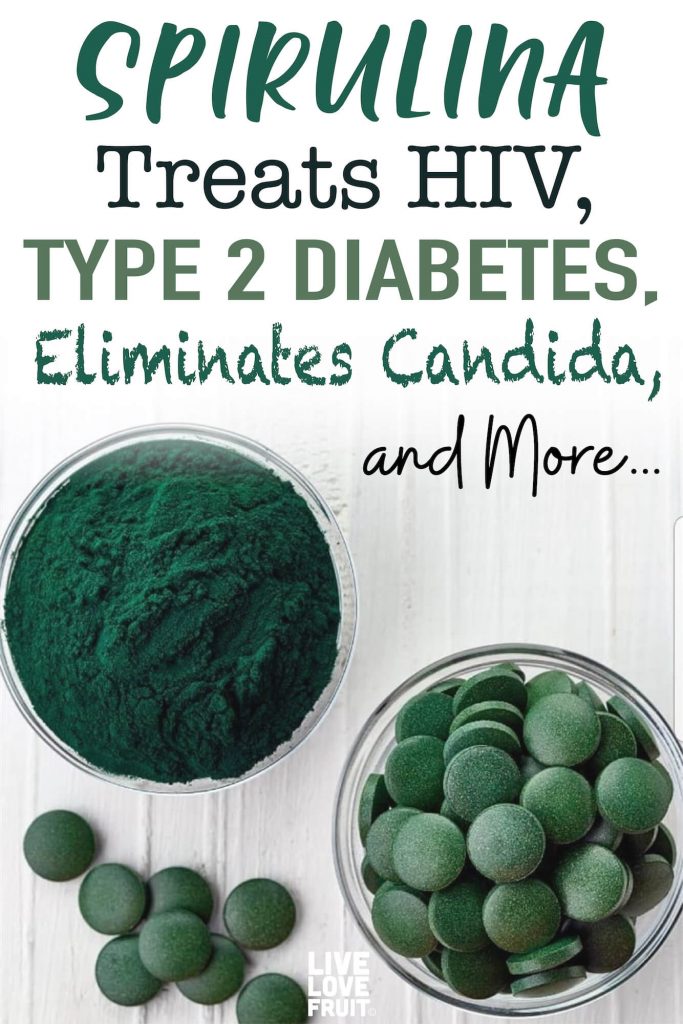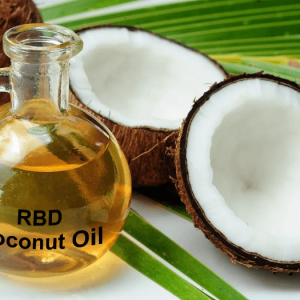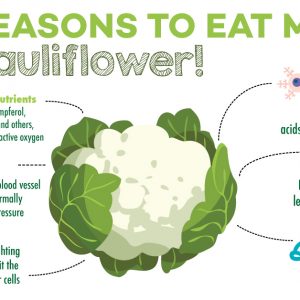Top Spirulina Benefits: Treat HIV, Type 2 Diabetes, Candida, and More
108.5Kshares

The recent trend of spirulina-everything isn’t new (and neither is spirulina itself). In fact, it has been used in foods as far back as the 1500s, and was a popular food source for the Aztecs.
The Aztecs used spirulina (also known as “Tecuitlatl”) as a primary protein source for hundreds of years and Lake Texcoco is still an abundant source of the superfood today. Now, spirulina is making a comeback, and for good reason. Gram for gram, spirulina has one of the highest protein concentrations out of any food on the planet.
What is Spirulina
Spirulina is a blue-green algae (cyanobacteria) that grows in freshwater (some strains of spirulina even live in hot springs!). It’s extremely high in protein, contains an almost perfect balance of Omega-3 to Omega-6, and is rich in the following minerals: iron, copper, calcium, magnesium, potassium, phosphorous, selenium and zinc. It also contains high levels of vitamin A, C, E, K, B6, folate, niacin, pantothenic acid, riboflavin and thiamin.Spirulina is a simple, one-celled organism that got its name from the Latin word for helix (meaning spiral), because it possesses spring-like physical characteristics (2).
Top Spirulina Benefits
Due to its nutrient-dense qualities, spirulina has been found to be useful for a variety of ailments. It is particularly great at boosting the immune system, so we’ll start with that benefit first.HIV
When it comes to instances where the immune system plays a big part, HIV/AIDS is a great example. In fact, the moderately low HIV/AIDS rates in Japan, Korea and Chad stumped until they discovered that individuals in these regions ingest large amounts of algae.A review published in the Journal of Applied Phycology in 2012 explained this phenomenon, and the reasons for why spirulina was so protective against this virus (3). Scientists took 11 HIV patients who had never taken antiretrovirals, and split the members into three gatherings: one group ate 5 grams of dark-colored seaweed consistently, one group ate 5 grams of spirulina, and one ate a mix of both. After three months, two key discoveries were found:
2. CD4 cells (T-helper white blood cells that fight disease and are used to stage HIV and HIV-1 viral load, another HIV biomarker) stayed stable.
The immune potential of spirulina was so promising that one participant from the study volunteered with the review for an extra 10 months, and found they benefited from “clinically significant improvement in CD4 and decreased HIV viral load.”
The way that spirulina slows HIV progression and boosts the immune system makes it a very reasonable supplement that should be used by patients affected by HIV.
Type 2 Diabetes
Maintaining balanced blood sugar levels is an important part of everyday health for diabetics. Now, studies are finding that spirulina may help with just that. In some animal studies, spirulina has been quoted as being just as effective as diabetes medication (like Metformin) (4).There is also evidence that spirulina is effective in human models. In a two-month study on 25 people with type 2 diabetes, just 2 grams of spirulina every day (about half a teaspoon) led to an impressive reduction in blood sugar levels (5). Just two months of 1/2 a teaspoon of spirulina led to significant reductions in HbA(1c) levels, indicating improved long-term glucose regulation. Triglyceride levels were also significantly lowered.
Candida
Another way spirulina helps the body is by ensuring candida doesn’t spiral out of control. Controlling candida is important if you have an autoimmune disease like Chron’s disease, chronic fatigue syndrome, fibromyalgia or Lupus, as it can worsen the symptoms.Several animal studies have shown spirulina to be an effective antimicrobial agent, particularly for candida (7, 8). By encouraging a healthy gut microbiome, spirulina inhibits the overgrowth of candida in the gut. A healthy gut microbiome also encourages a strong immune system, so taking a bit of this powder every day is a serious win-win.
Cancer
Because of the way spirulina benefits the immune system, it’s no wonder it helps fight cancer. In one study, researchers found that spirulina was able to inhibit the growth and development of tumors resulting from over-exposure to UVB rays from the sun. In the study, spirulina was shown to promote healthy gene function, inhibit free radical producing enzymes, reduce inflammation and limit DNA damage (9).Heavy Metals
We pick up heavy metals from everywhere in the environment. Whether through our food (pesticides/herbicides), air (pollution) or water, we’re exposed to them on the daily. Heavy metals target the central nervous system, cardiovascular system, gastrointestinal system, lung, kidneys, liver, endocrine glands and bones. Thankfully, we have spirulina to help.Spirulina can bind with heavy metals in the body to help remove them. It is also incredibly high in chlorophyll, which facilitates the removal of toxins from the blood and boosts the immune system.
One study found that just 500 milligrams of spirulina a day combined with zinc supplementation can reduce arsenic toxicity by almost half (11).
Spirulina has also been used on those exposed to radiation from the Chernobyl nuclear meltdown. In just 20 days, urine radioactivity levels in children were reduced by 50% (12). Spirulina was also used to improve the immune systems of children affected by the Chernobyl disaster.
Heart Disease
Diabetes and cardiovascular health are intimately connected, so it’s really no surprise that spirulina improves heart health. The high concentrations of phycocyanin in spirulina are thought to inhibit pancreatic lipase activity, which in turn causes higher excretion of triglycerides through your feces.In one study, participants were given 4.5 grams of spirulina a day for six weeks. At the end of the trial, serum triglyceride levels and total cholesterol were significantly reduced (with the added bonus of higher HDL). It also regulated blood pressure among women and men between the ages of 18 and 65 without any other dietary changes being made (13).
In another study, diabetic patients given 2 grams of spirulina a day showed improve glycosylated hemoglobin and better lipid profiles (14).
Allergies
Seasonal allergies are a pain, but spirulina benefits the body by reducing the inflammation that causes sinus problems to begin with. When someone experiences allergies from pollen, dust, or pets, the inside of their nose may swell. This is called allergic rhinitis, and there is some evidence that spirulina could help improve symptoms of this condition.A study published in 2013 states that spirulina can relieve nasal inflammation and reduce histamine in the body. Compared to a placebo, spirulina was found to reduce symptoms like runny nose, sneezing, nasal congestion, and itching (15).
According to the authors, “Spirulina is clinically effective on allergic rhinitis when compared with placebo. Further studies should be performed in order to clarify the mechanism of this effect.”
Not All Spirulina is Created Equal
An important thing to remember when considering a brand of spirulina is the quality you’re paying for. Spirulina is known to absorb heavy metals and toxins from its environment, so it’s vital to make sure yours comes from a clean source.Unfortunately, many spirulina products on the market today are grown in areas that have high concentrations of heavy metals (16). Spirulina grown in Japan might have high radiation levels due to the nuclear disaster in Fukushima in 2011.
There is also big concerns surrounding spirulina grown in China, as many spirulina supplements from this region have been found to be contaminated with lead, mercury and arsenic.
Spirulina grown in natural lakes are also at risk of contamination from heavy metals, pollution and bacteria.
If you do purchase spirulina from these areas, make sure they have valid testing certificates to ensure their products are devoid of heavy metals.
Another thing about organic spirulina, specifically, is that it can be grown outside the USA (usually in China), resulting in high levels of contaminates and heavy metals, bad taste and smell, and is often irradiated. If the organic spirulina is only manufactured in the USA, that means it was only bottled there, and not grown. Hawaiian grown spirulina uses vegan mined nitrates and no pesticides, herbicides, or GMO’s, which results in a very clean product (such as those products manufactured by Nutrex Hawaii).
Some of the best spirulina you can purchase is Hawaiian Pacifica Spirulina. This spirulina has more nutrition gram per gram than any other spirulina on the market. Just one 3-gram serving contains (17):
– 60 percent protein and vitamins A, K1, K2, and iron, manganese and chromium
– rich source of carotenoids, GLA, SOD and phycocyanin
– 2800 percent more beta-carotene than carrots
– 3900 percent more iron than spinach
– 600 percent more protein than tofu
– 280 percent more antioxidants than blueberries
The brand I love and trust the most is Nutrex Hawaii. Their Pacifica Spirulina Powder goes through rigorous testing to ensure it is clean and clear of any heavy metals.
My Amazon Picks
All
Video On Demand: Rent or Buy
Clothing & Accessories
Major Appliances
Arts, Crafts & Sewing
Automotive
Baby & Nursery
Beauty & Grooming
Books & Textbooks
Collectible Coins
Camera & Photo
Cell Phones & Accessories
Classical Music
Computers, Tablets & Components
Blu-Ray & DVD
Electronic Components & Home Audio
Entertainment Collectibles
Video Games
Other Gift Card Brands
Grocery & Gourmet Food
Patio, Lawn & Garden
Health & Household
Business & Industrial Supplies
Jewelry
Kindle Store
Kitchen & Dining
Magazines
Miscellaneous
Digital Music
CDs & Vinyl
Musical Instruments
Office & School Supplies
Pet Food & Supplies
Patio, Lawn & Garden
Shoes, Handbags, Wallets, Sunglasses
Software
Sports Collectibles
Sports & Fitness
Home Improvement
Toys & Games
VHS
Video Games
Watches
My Amazon Picks
All
Video On Demand: Rent or Buy
Clothing & Accessories
Major Appliances
Arts, Crafts & Sewing
Automotive
Baby & Nursery
Beauty & Grooming
Books & Textbooks
Collectible Coins
Camera & Photo
Cell Phones & Accessories
Classical Music
Computers, Tablets & Components
Blu-Ray & DVD
Electronic Components & Home Audio
Entertainment Collectibles
Video Games
Other Gift Card Brands
Grocery & Gourmet Food
Patio, Lawn & Garden
Health & Household
Business & Industrial Supplies
Jewelry
Kindle Store
Kitchen & Dining
Magazines
Miscellaneous
Digital Music
CDs & Vinyl
Musical Instruments
Office & School Supplies
Pet Food & Supplies
Patio, Lawn & Garden
Shoes, Handbags, Wallets, Sunglasses
Software
Sports Collectibles
Sports & Fitness
Home Improvement
Toys & Games
VHS
Video Games
Watches
Nutrex Hawaii cultivates their spirulina in a Biosecure Zone, certified free of pesticides, herbicides and industrial pollutants in Kona, Hawaii. Each pond is fed with 100% potable drinking water from Hawaiian aquifers and pure deep ocean water with beneficial trace minerals. The constant exposure to high levels of sunlight in this area also ensure high levels of carotenoids in the spirulina.
Each lot of their spirulina goes through a series of over 15 different tests that include microbial, heavy metals, and other analyses unique to micro algae. Their spirulina is also periodically tested for microcystins, and has never been found to be contaminated with them.
How to Take Spirulina
Spirulina comes in many different forms, and there are many ways you can incorporate it into your diet. My favorite way is to blend the powder into smoothies, or mix a couple teaspoons in a liter of fresh coconut water.Here are all the different forms of spirulina you might want to consider:
– Spirulina Powder – easily blended into smoothies, juices, sprinkled onto salads, or made into energy balls with dates and other superfoods
– Spirulina Tablets – little tabs of spirulina you can easily swallow without having to get over the algae taste. Some people prefer the tablets, but I prefer the powder, because I actually love the taste!
I absolutely love spirulina and have been taking it for nearly 3 years! I find that it is a great source of irons (especially for vegans and vegetarians), as well as protein for post-workout recovery. And if you can’t get over the taste – just take the tablets!
This post contains affiliate links
108.5Kshares
About the Author
Carly Fraser has her BSc (Hons.) Degree in Neuroscience, and is the owner and founder at Live Love Fruit. She currently lives in Winnipeg, Manitoba, with a determined life mission to help inspire and motivate individuals to critically think about what they put in their bodies and to find balance through nutrition and lifestyle. She has helped hundreds of thousands of individuals to re-connect with their bodies and learn self-love through proper eating habits and natural living. She loves to do yoga, dance, and immerse herself in nature.
Reader Interactions
Related Posts
- Get link
- X
- Other Apps
- Get link
- X
- Other Apps












Comments